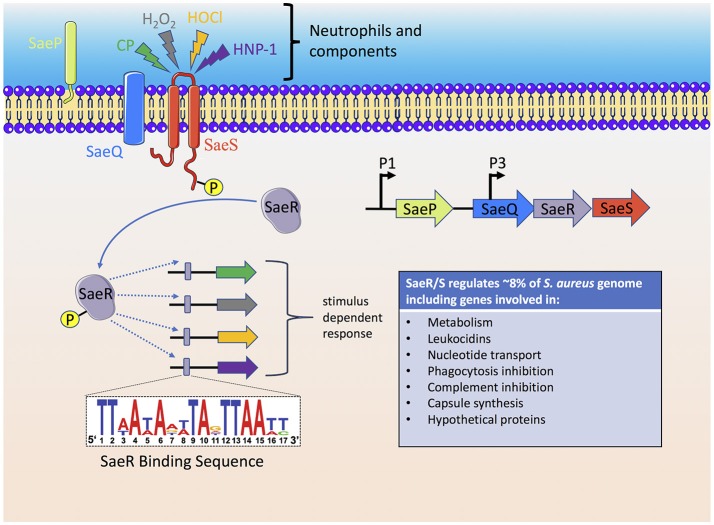Figure 3.
The S. aureus SaeR/S two-component system senses neutrophils and neutrophil components to activate an anti-host immune response. Activation of the SaeS histidine kinase results in autophosphorylation which is subsequently transferred to the SaeR response regulator. A promoter binding region recognized by phosphorylated SaeR (SaeR binding sequence) initiates gene transcription of SaeR/S-regulated virulence factors that target neutrophil antimicrobial mechanisms, cell fate and cellular signaling. The immediate genes transcribed by SaeR/S are dependent on the stimulus, i.e., the SaeR/S transcriptional profile is dynamic and specific to the stimulus. Since bacterial sensory-regulatory systems activate multiple virulence factors, therapeutic approaches to inhibit bacterial sensing, and activation is an active area of research. CP, calprotectin.

